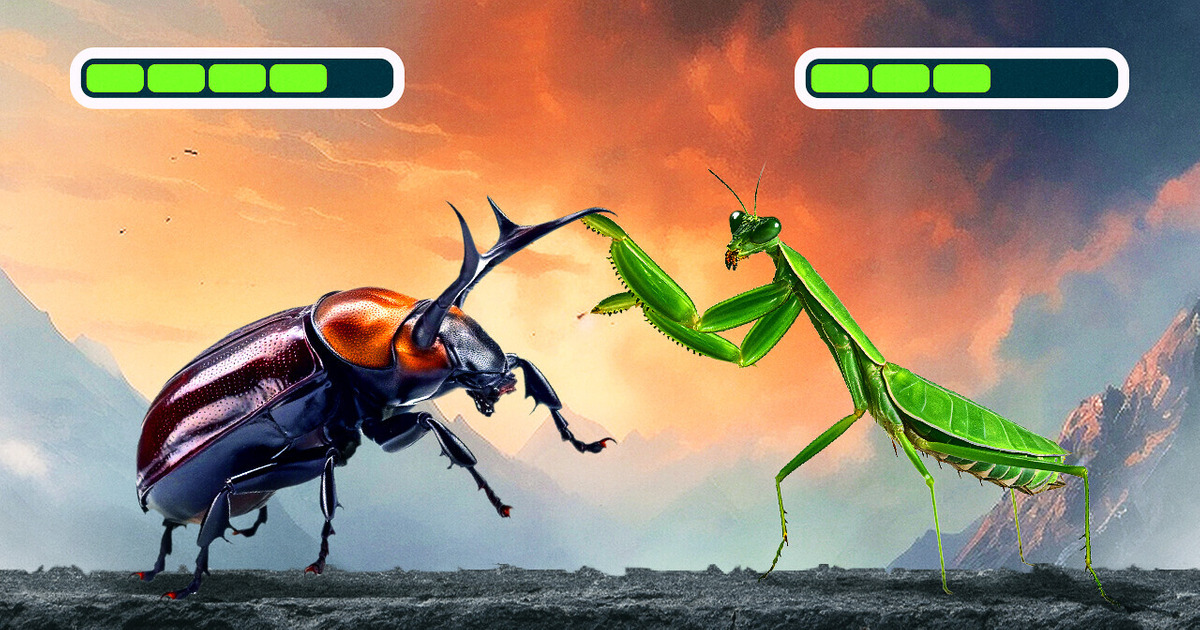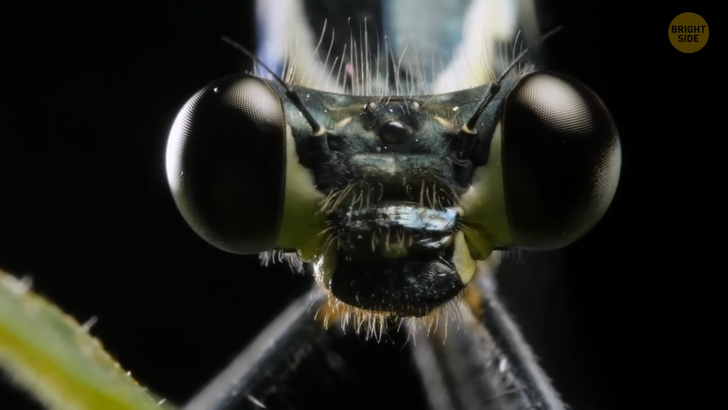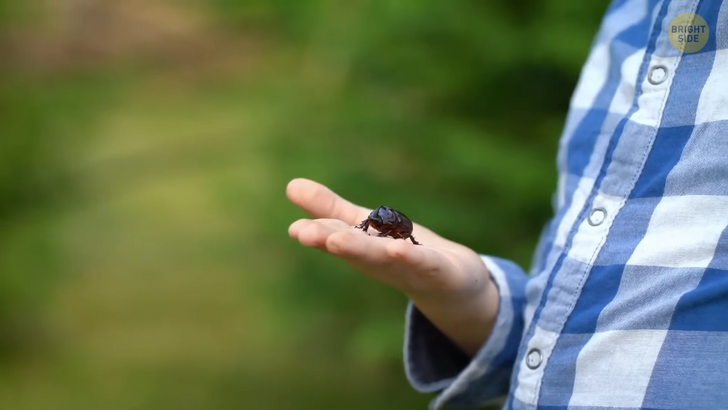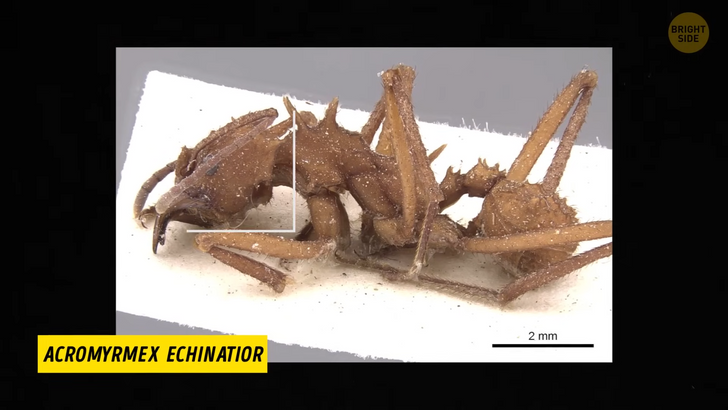14 Unique People Who Seem to Have Aliens Among Their Ancestors


Get ready to witness the ultimate showdown in the world of insects as they battle it out in the Insect Combat Championship. Here, the arena becomes their Octagon, and their instincts collide in a spectacular display of strength, agility, and strategy. We’ve brought together a diverse array of contenders from the insect world, showcasing their incredible abilities. From the lightning-fast strikes of the praying mantis to the calculated strategies of the honeybee, let’s see who this year’s ultimate champion will be.

Starting with our little buzzing friends, honey bees! These incredible creatures work their tiny wings off, carrying around loads of nectar. More so, a worker bee can carry over half its own weight in nectar and still manage to stay up in the air.
But that’s not all these amazing bees do. They’re like little architects, too! They take charge of building their hives, putting together the intricate structure that we all know. Apart from their amazing strength, they also have a secret talent for construction. And let’s not forget about their bravery!
When it comes to protecting their home sweet home, these tiny warriors take on the role of defenders. They don’t back down in the face of predators; they stand their ground and ensure the safety of their fellow bees and their precious hive. Unfortunately, in this year’s competition, the honeybees only managed to snatch sixth place. A round of applause, please!

Moving on to the mighty cockroach — not particularly a fan favorite. Either way, cockroaches do hit the jackpot when it comes to survival skills. For starters, they can survive for a whole week without their... heads?! Also, if they have access to water, they can go without food for up to a month. They can also be lightning-fast. Cockroaches are some of the speediest crawling insects. This way, they can find shelter and escape from predators... or shoe-wielding humans.
Now, let’s talk about their incredible senses. The cockroach species that are frequently found in America is equipped with a multitude of smell and taste receptors. This makes them experts at finding food sources nearby. Unlike other insects with limited diets, cockroaches are opportunistic eaters. They’ll happily chow down on meat, cheese, cardboard, and books. Their versatile eating habits give them a better chance of survival when their preferred food options are scarce.
Let’s not forget about their strong exoskeletons. It gives them the ability to withstand compression forces up to nine hundred times their own body weight. Their exoskeletons consist of overlapping plates connected by a stretchy membrane, which allows them to flatten out and provides extreme strength. Even if something is dropped on them, their specially designed spines enable them to transfer traction to their legs, allowing them to escape the pressure unharmed. In our contest, they came in at a reasonable fifth place, so let’s hear it for the highly resistant cockroaches!

Have you ever heard about our next contestant, the rhinoceros beetle? It’s quite a remarkable little creature. Who would have thought that a tiny insect could have more strength than an elephant? Well, not in terms of absolute weight, of course, only when it comes to proportional strength. Elephants can only carry around a quarter of their own weight, while the rhino beetle can carry a mind-boggling eight hundred and fifty times its own weight.
So, what makes these insects so incredibly strong? For starters, they are about an inch long and have incredibly strong muscles. But that’s not all. These beetles are masters of balance. They always make sure to keep at least three legs on the ground at all times, which gives them an amazing sense of stability and leverage. This is what allows them to lift such heavy objects with ease.
Living in tropical jungles and forests, rhino beetles need all that strength to navigate through the dense jungle floor. You see, they have to push aside branches and debris in search of their favorite food. That’s how they got their name, by the way, because of the rhinoceros-like horn on their heads. It’s not just for show; they actually use it to move obstacles out of their way.

Now, don’t be fooled by their fearsome appearance. Rhino beetles are anything but ferocious or dangerous. They have a pretty chill diet consisting of rotting fruit and sap. Despite their horned and intimidating look, they won’t bite or sting. These gentle insects are harmless and definitely not looking to pick a fight. They also came in at number four on our list of strongest insects, so let’s give them a round of applause too!
Make room for our next contestants, the leafcutter ants! They are pretty amazing creatures, known for their incredible strength, with jaws that could give any weightlifter a run for their money. There’s this specific type of leafcutter ant (called Acromyrmex echinatior), and it turns out they have something really special in their exoskeleton. It’s like a super tough armor made of this thing called biomineral.
This armor is super strong and covers their whole body. No other insect has been found with this biomineral armor before. The only other creature that has it is a sea urchin, and it’s found in its powerful teeth. Experiments have shown that leafcutter ants with this armor tend to win when they’re battling with other ants. Not only that, but this armor also does an awesome job of keeping fungus at bay.

Leafcutter ant nests are no joke either. These things are like underground supercities! They’ve got thousands of chambers of all different sizes, all connected by tunnels. Should you ever find yourself strolling through the rainforest, you might be walking on top of a bustling metropolis of leafcutter ants.
Now, some areas in a leafcutter ant nest are called fungus garden chambers. In a large enough colony, some of these are actually big enough for a full-grown human to stand inside! Leafcutter ants didn’t win the competition, but they did make it to the podium. Congratulations on their third-place win!
Don’t let our next fascinating contestant trick you! At first glance, the praying mantis may seem delicate and fragile. In reality, this insect has an intricate anatomy that is built for both strength and precision, making it truly unique among its six-legged buddies.
Let’s start with its head. Shaped like a triangle, it sports large compound eyes that can rotate a full one hundred and eighty degrees. This nifty adaptation allows the mantis to effortlessly scan its surroundings for potential prey. More so, its elongated thorax, connecting the head to the abdomen, provides a stable base for its powerful forelegs.

Speaking of those forelegs, they are the mantis’ most iconic feature. They have sharp spines and a special joint that lets them fold and unfold in a flash. This adaptation not only gives the mantis its name but also contributes to its incredible hunting skills.
Picture a pair of spring-loaded sticks that can snatch unsuspecting prey faster than you can blink! The mantis also has a lightweight exoskeleton and a flexible body, which adds to its strength and agility. The praying mantis took second place in our competition, so congratulations are in order!
Now that we’ve reached the top of the pyramid, the waiting is officially over. The grand prize for the world’s strongest insect goes to...the dung beetle! This little critter isn’t just your ordinary insect — it’s actually the strongest insect in the world, and believe it or not, it’s the strongest animal on the entire planet... proportionally, that is. One species can pull over a thousand times its own body weight! That’s the equivalent of an average person effortlessly tugging along six double-decker buses filled with people.

There are a few factors that contribute to their incredible strength. In addition to their hard exoskeleton, dung beetles have seriously strong leg muscles. Their legs are uniquely designed for digging and pushing heavy loads. They also have a low center of gravity. This helps them maintain their balance when they’re carrying or rolling stuff that is much larger than their own tiny bodies.
Dung beetles aren’t just strong; they’re also super speedy. These guys can zoom around at speeds of up to point sixty-seven miles per hour. That’s quite impressive for such a small creature.











